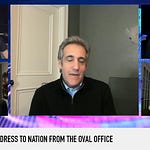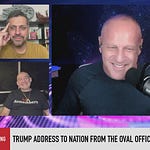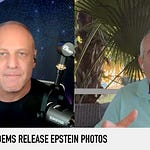Paid subscribers can access a deeper dive below and the full video above.
War Secretary Pete Hegseth summoned nearly 800 U.S. generals and admirals to Quantico on short notice. No clear agenda. Eyes meeting eyes. The Pentagon read it as a loyalty play—until President Trump reframed the gathering as “a very nice meeting... an esprit de corps.” The tone shifted. The underlying question didn’t.
Tomorrow’s event may look like a pep rally, but the structural reality beneath it tells a different story. The administration’s strategic center of gravity is pivoting inward—away from Europe and the Indo-Pacific, toward domestic deployment. That shift, embedded in policy language and personnel moves over recent months, creates the test. Not in what’s said at Quantico, but in what senior officers are asked to normalize.
The Legal Tripwire
The uniforms Americans have seen policing protests are National Guard—typically under governors or occasionally federalized. Active-duty military cannot perform domestic law enforcement under Posse Comitatus unless the Insurrection Act is invoked. That’s the line. It hasn’t been crossed yet, but the architecture around it is changing. New surveillance authorities passed last week. Prosecutorial vectors sharpened. A broadened definition of threat. Active-duty troops on American streets is no longer unthinkable—it’s just currently unlawful.
Professor Terrence Goggin, who taught at West Point and understands the uniformed institution from the inside, made the constitutional reality clear: the president cannot unilaterally withdraw from NATO, cannot relocate combatant commands without Congress, cannot redeploy forces based on executive whim. Those decisions belong to Congress. They always have, since the Continental Congress told Washington where to march. The president commands operations; Congress controls structure, funding, and force placement.
If the administration attempts to bypass that framework—pulling troops from treaty obligations, repositioning forces for domestic operations, ignoring statutory command structures—those are unlawful orders. And unlawful orders need not be obeyed.
The Historical Echo
In 1861, President James Buchanan and his Secretary of War Jefferson Davis tried to reposition U.S. forces and materiel to aid the seceding South. General Winfield Scott refused. He told Buchanan the orders were illegal, communicated directly with President-elect Lincoln, and fortified Washington with trenches and troops to ensure the constitutional transfer of power. Scott understood his oath ran to the Constitution, not to a president attempting to fracture it.
The parallel matters because the question at Quantico isn’t hypothetical. If policy pivots toward domestic deployment and senior leaders are asked to accept it despite legal barriers, that’s the loyalty test. Not a show of hands, but a question of acquiescence. Whether the brass will normalize an unconstitutional turn by remaining silent.
What Happens If They Refuse?
Paid subscribers can access a deeper dive below and the full video
















